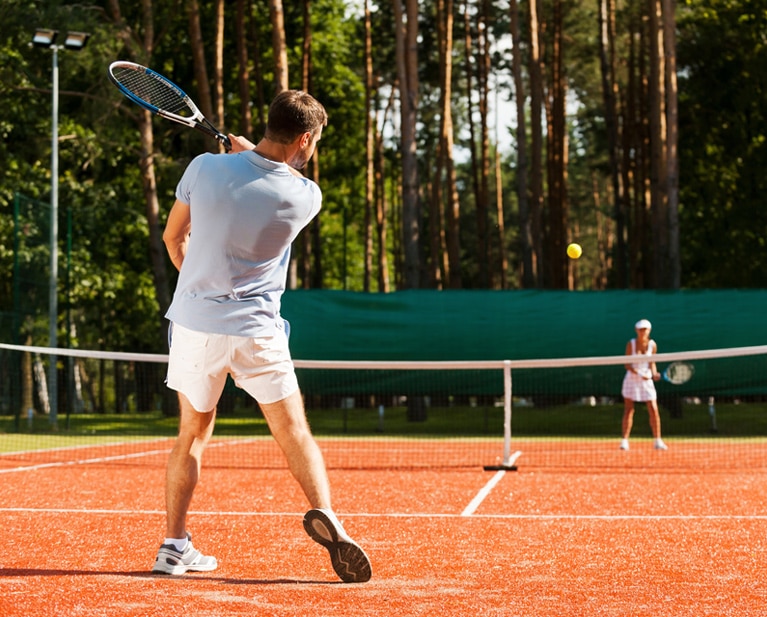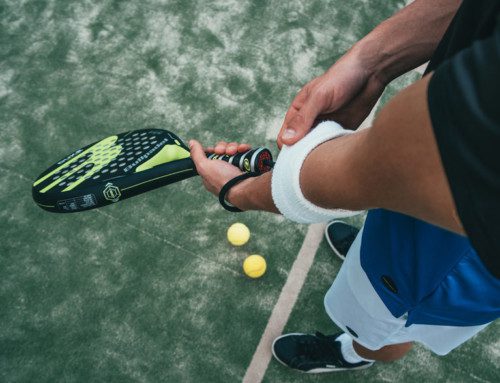As the weather warms up, summer is the perfect time to enjoy being active in the beautiful outdoors. One of America's favorite outdoor pastimes is tennis, with nearly 18 million people picking up a racket to hit the court each year. The game can be played across a broad spectrum of ages and ability levels.
Though the sport has many advantages, it's not without its risks. One crucial aspect of the game is how to progress your skills without sustaining an injury. Possible tennis injuries include both overuse injuries due to repetitive movements such as rotator cuff tendinitis or lateral epicondylitis (tennis elbow) and acute injuries suffered on the court such as a lateral ankle sprain.
So, why do these injuries happen and what is the best way to prevent injuries?
Preventing Tennis Injury
The key to injury prevention is a proper warm-up before playing. You can implement suitable warm-up techniques by using your core and integrating functional exercises into your workout regimen that are similar to the movements that you would do on the court.
Movement Planes
Tennis is a game that requires movement in three planes of motion:
- The Sagittal Plane when sprinting forward such as to hit an approach shot.
- The Frontal Plane when moving side to side. You might exercise this plane of motion when reaching for a ball cruising toward the sideline, for example.
- The Transverse Plane when rotating, as one does while hitting a forehand.
The majority of tennis movements are a combination of these planes. To make sure you can better execute these movements on the court, you must perform exercises that challenge your body in all three planes of motion.
Functional Exercise
A functional exercise trains your muscles to work together and prepares them for movements that you may do in both daily life and sports. By using muscles in the upper body and lower body at the same time, core stability is emphasized.
An example of a basic functional exercise is a squat. When doing a squat, you are using the same muscles you need to get up from a chair or off of the floor. Squats not only prepare your body for daily movement but also in tennis when hitting a low ball.
Performing squats regularly builds core and leg strength and improves flexibility in your hips. The more efficient your body is at squats, the less likely you will be to forward bend incorrectly to reach that low ball and risk potential injury to your lower back.
Which Exercises Should I Do?
Functional exercises are great to complete as part of your workout to decrease injury. However, determining the best functional exercises to do depends on you. You'll want to consider a variety of factors: your activity level, any pre-existing injuries (like osteoarthritis or a joint replacement), and how often you exercise during the week.
These five exercises are safe for the majority of people to partake in, regardless of activity level:
- Squats
- Low Rows
- Standing rotation with a band
- Monster walks side to side
- Planks
The following exercises are a bit more challenging, and act as a progression for those with a higher level of activity:
- Lateral power lunge with a medicine ball
- Dynamic side step ups
- BOSU balance exercise
- Side planks and side planks with rotation
- T-raises in standing
Remember, pain is not the goal. If you have pain during these exercises, it is best to stop the activity and consult with a physical therapist.
Check out our Facebook and Instagram for videos of these exercises. For more information, check out part two and three (The Dynamic Work Out and Core Stability & Power) in the Injury Prevention in Tennis series!





